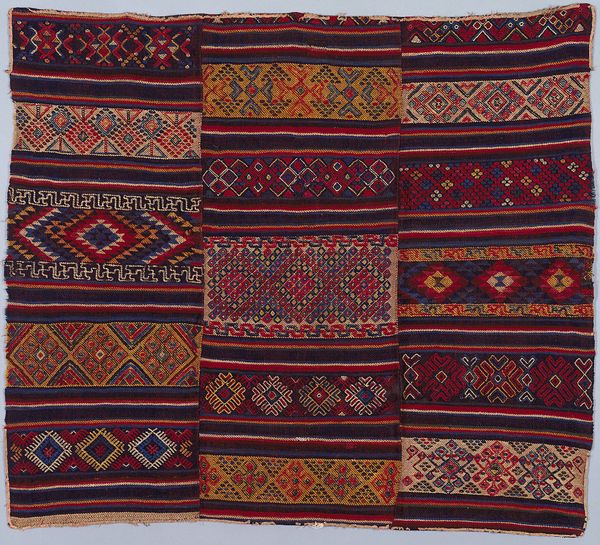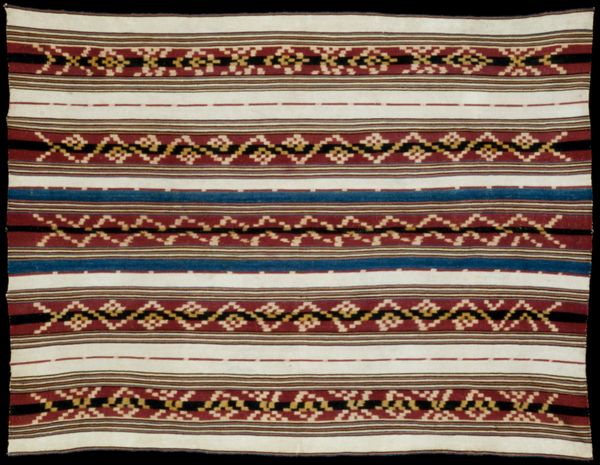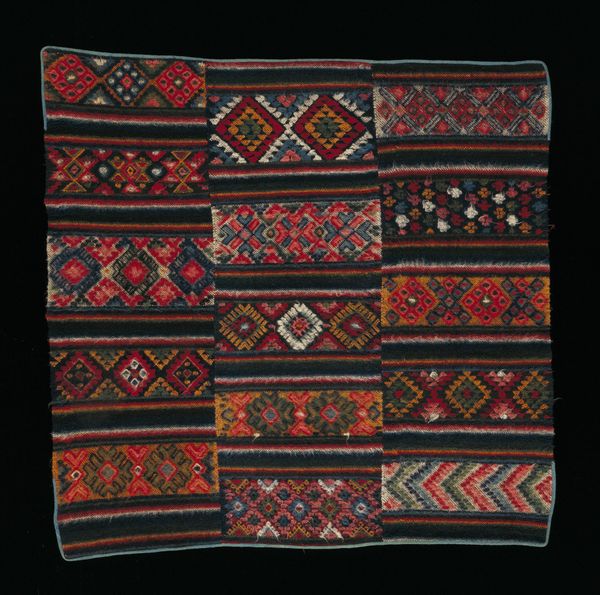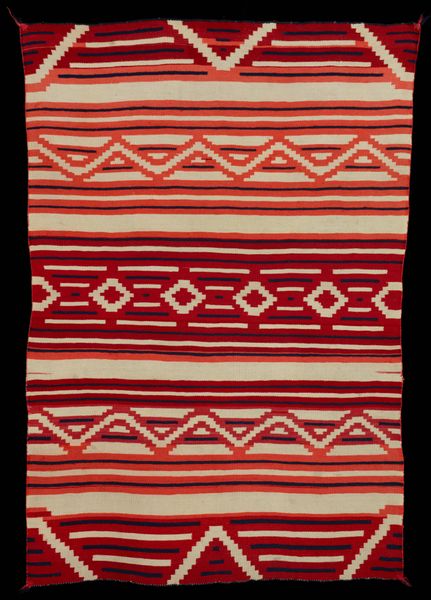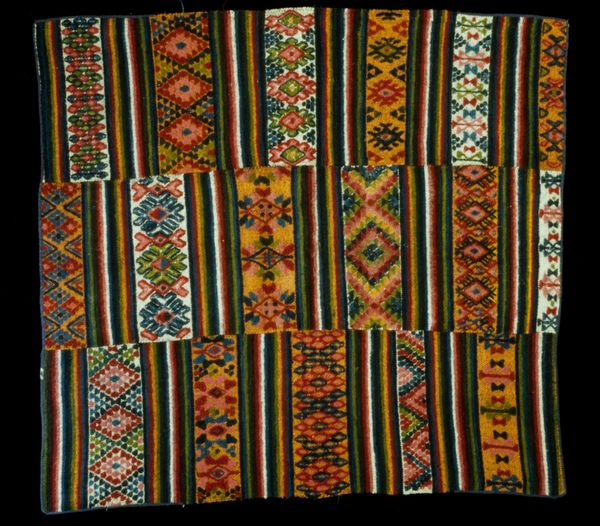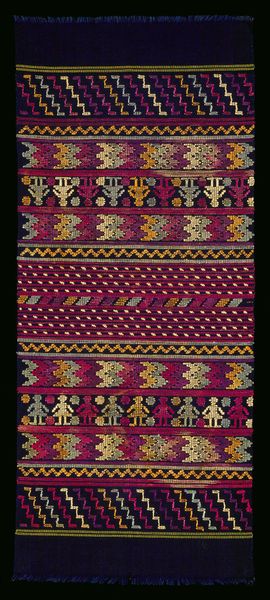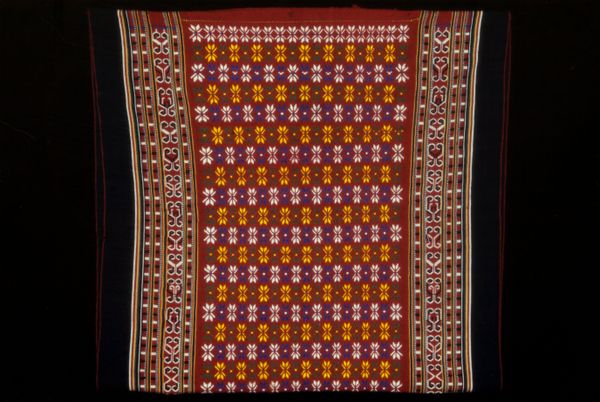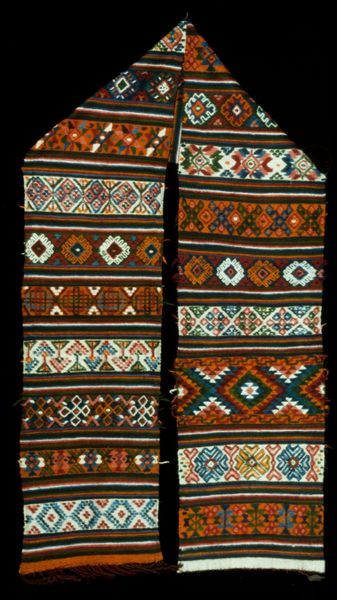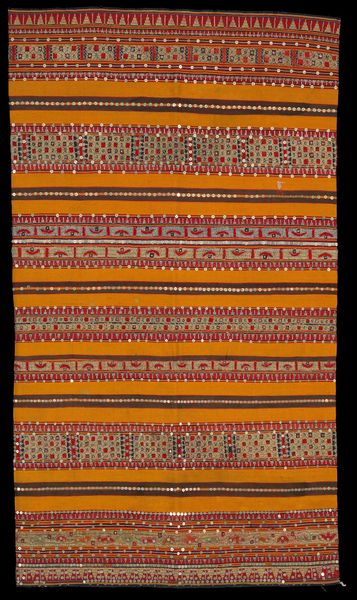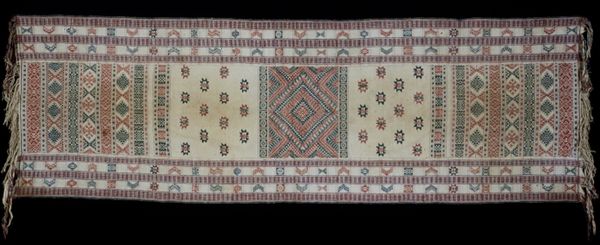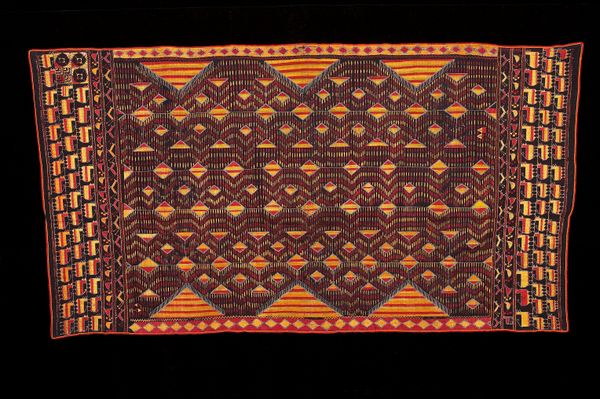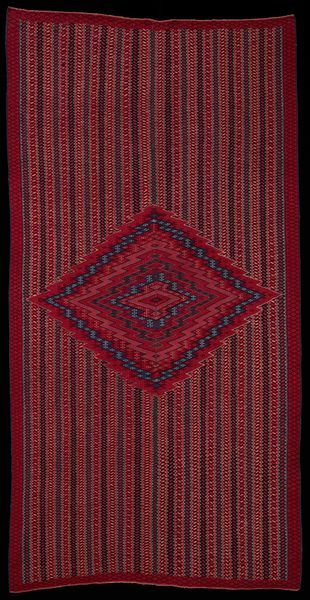
weaving, textile
#
pattern heavy
#
weaving
#
textile
#
geometric pattern
#
pattern design
#
geometric
#
repetition of pattern
#
regular pattern
#
pattern repetition
#
textile design
#
layered pattern
#
funky pattern
#
combined pattern
Dimensions: 45 1/2 x 48in. (115.6 x 121.9cm)
Copyright: Public Domain
Editor: Here we have the *Yatha Charkab Blanket*, likely made in the 20th century. It’s a woven wool textile. I’m immediately struck by the sheer complexity of the geometric patterns. How would you interpret this work? Curator: This textile speaks volumes about the socio-cultural landscape in which it was created. What initially grabs my attention is the intended function of such an intricately patterned blanket, a functional object elevated to an art form, so to speak. Have you considered the public role an item like this may have served? Editor: That’s interesting! I hadn’t really thought about it as having a ‘public role’. I was so focused on the craftsmanship, which is undeniable. Was this kind of weaving common at the time, or was it more of a luxury item? Curator: Both! Weaving, and textile production in general, often reflects the economic and social stratification of a society. While weaving was common, the skill and materials involved in creating such an intricate pattern would likely signify a certain level of status or specialized role within the community. Its preservation in a museum now further elevates that status. Editor: So its journey from a utilitarian object to a museum piece changes how we perceive it today? Curator: Precisely. Think about the power dynamics at play; who gets to decide what's 'art' and worthy of preservation? This piece also prompts consideration of authenticity and appropriation, issues that museums continue to grapple with. Does the institution amplify or distort the cultural voice embedded within it? Editor: That is something I need to consider in my role here, too. I’ll definitely look at textiles differently from now on. Curator: It’s a continuous dialogue, challenging assumptions about value, representation, and cultural heritage. Always question whose stories are being told, and how.
Comments
No comments
Be the first to comment and join the conversation on the ultimate creative platform.
